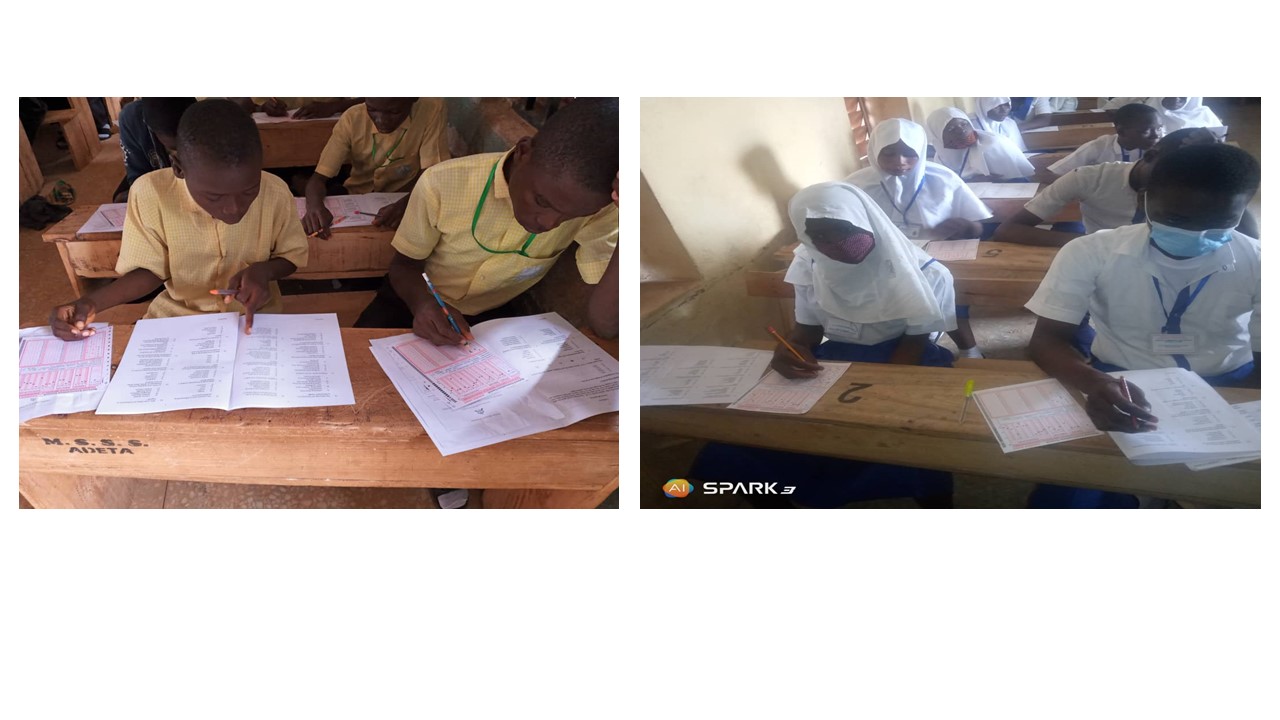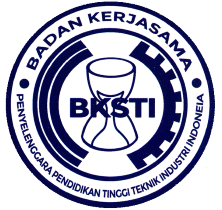INVESTIGATING UNIDIMENSIONALITY OF MATHEMATICS MULTIPLE-CHOICE TEST ITEMS USED FOR JOINT MOCK EXAMINATION IN KWARA STATE PUBLIC SCHOOLS
DOI:
https://doi.org/10.12928/spekta.v2i2.3984Keywords:
Joint Mock Exam, Mathematics Test Items, Multiple-Choice Test Items, UnidimensionalityAbstract
Mathematics is an essential subject for human existence on day-to-day activities. This is an indication that it if properly handed it could enhance national development. Therefore, in test items construction to examine students performance in the subject careful considerations must be given. The purpose of the study is to investigate unidimensionality of mathematics multiple-choice test items used for a joint mock examination in Kwara State public schools. The study adopted a descriptive research survey type. The population comprised students in Senior Secondary Schools while the target population consisted of Senior Secondary School II students. The multistage sampling technique that involved stratified, proportionate and simple random sampling was used at different stages of selections. The measuring device was the 2018/2019 Kwara State Joint Mock Mathematics Test. The test is a standardized test and thus the validity and reliability coefficients were not disclosed to the public. The statistical technique employed was factor analysis using SPSS 25.0 version. Tetrachoric correlation statistic was used to obtain 0.96 reliability coefficient. This study, therefore, concluded that only 41 (82%) of 50 multiple-choice items revealed evidence of unidimensionality. One of the recommendations was that those items that violated unidimensionality assumption should be revisited so that instrument could be 100% compliance to unidimensionality.
References
Orim, S. N. (2015). Unidimensionality and classical test parameters of 2007 WAEC and NECO biology tests in Cross River State, Nigeria. Unpublished Masters Degree Thesis. Faculty of Education, University of Calabar, Calabar, Nigeria.
Ajeigbe, T. O. & Afolabi, E. R. I. (2014). Assessing unidimensionality and differential item functioning in the qualifying examination for senior secondary school students, Osun State, Nigeria. World Journal of Education, 4 (4), 30 -37. Downloaded 25/09/2019 from www.sciedu.ca/wje or http://dx.doi.org/10.5430/wje.vn4p30.
Crosnoe, R., Johnson, M. K., & Elder, G. H. (2004). School size and the interpersonal side of education: An examination of race/ethnicity and organizational context. Social Science Quarterly, 85(5), 1259-1274.
De Ayala, R. J. (2009). The Theory and Practice of Item Response Theory. New York London: The Guilford Press, A Division of Guilford Publications, Inc
Dorans, N. J. & Kingston, N. M. (1985). The effects of violation of unidimensionality on the estimation of item and ability parameter and item response equating of the GRE verbal scale. Journal of Educational Measurement, 22 4), 249-262.
Ebiendele E. P. (2011). Mathematics: Indispensable tool for successful and balance human existence on this planet. Advances in Applied Science Research, 2 (5), 449-456. Available online at www.pelagiaresearchlibrary.com
Federal Ministry of Education, (2009). Senior secondary school mathematics curriculum. Abuja: NDERC
Jimoh, M. I., Balogun, A. O. & Yusuf, O. A. (2016). Comparability of literacy skill scores in the school-based assessment of male and female middle basic pupils in Moro Local Government Area, Kwara State, Nigeria. Ilorin Journal of Education, 35, 1- 8.
Kwara State Ministry of Education Human and Capital Development, (2019). Annual Education Sector Performance Report. Kwara State Government.
Lee, Y.-W. (2004). Examining passage-related local item dependence and measurement construct using Q3 statistics in an EFL reading comprehension test. Language Testing, 21, 74–100.
Meijer, R. R. & Tendeiro, J. N. (2018). Unidimensional Item Response Theory. The Wiley Handbook of Psychometric Testing: A Multidisciplinary Reference on Survey, Scale and Test Development, edited by Irwing, P., Booth, T. & Hughes, D. J. Volume One, Chapter 15, 413-443. Publish by John Wiley & Sons Ltd.
Nandakumar, R. (1993). Assessing Essential Unidimensionality of Real Data. Applied Psychological Measurement, 17 (1), 29-38. Downloaded on 29/06/2020 from http://apm.sagepub.com/ University of Delaware.
National Open University of Nigeria (2006). Measurement and evaluation (EDU403). Lagos: Printed by the REGENT (Printing & Publishing) Ltd.
O’Neill, T. and Reynolds, M. (2006). Assessing the unidimensionality of the national council licensure examination for registered nurses (NCLEX-RN). Version, 1-9. Factor analysis is used to identify or validate subscales within a test.
Tsafe, A. K. (2012). Effective Learning of Mathematics: From Theory to Practice. Sokoto Educational Review 13, (2), 82–96.
Ziegler, M. and Hagemann, D. (2015). Testing the Unidimensionality of Items. European Journal of Psychological Assessment; 31(4), 231-237.
Nandakumar (1993). The assessed essential unidimensionality of real data. He used DIMTEST statistical technique to unidimensionality.
Hagell, P. (2014). Testing rating scale unidimensionality using the principal component analysis. Open Journal of Statistics, 4, 456-465. Available at. http://www.scirp.org/journal/ojs.
Verhelst, N. (2001). Testing the unidimensionality assumption of the Rasch model. Methods of Psychological Research Online,.6 (3), 231-71. Available at http://www.mpr-online.
Kline (2005). Classical Test Theory: Assumptions, Equations, Limitations, and Item Analyses. Chapter 5, 91-106. Available at https://www.sagepub.com/sites/default/files/upm-binaries/4869.
Cappelleri, J. C., Lundy, J. J and Hays R. D. (2014). Overview of Classical Test Theory and Item Response Theory for Quantitative Assessment of Items in Developing Patient-Reported Outcome Measures. 36 (5), 648 – 662. Available at https://www.ncbi.nlm.nih.gov/pmc/articles/PMC4096146/.
Fan X. (1998). Item response theory and classical test theory: an empirical comparison of their item/person statistics. Educational and Psychological Measurement 58 (3), 1-17.
Ilori, A. E., Sawa, B. A. and Gobir, A. A. (2019). Application of Cause-and-Effect-Analysis for Evaluating Causes of Fire Disasters in Public and Private Secondary Schools in Ilorin Metropolis, Nigeria. Archives of Current Research International, 19(2): 1-11.

Downloads
Published
How to Cite
Issue
Section
License
Copyright (c) 2021 Idris Mohammed Jimoh

This work is licensed under a Creative Commons Attribution-ShareAlike 4.0 International License.
Authors who publish with SPEKTA (Jurnal Pengabdian Kepada Masyarakat: Teknologi dan Aplikasi) agree to the following terms:
- Authors retain copyright and grant the journal the right of first publication with the work simultaneously licensed under a Creative Commons Attribution License (CC BY-SA 4.0) that allows others to share the work with an acknowledgment of the work's authorship and initial publication in this journal.
- Authors are able to enter into separate, additional contractual arrangements for the non-exclusive distribution of the journal's published version of the work (e.g., post it to an institutional repository or publish it in a book), with an acknowledgment of its initial publication in this journal.
- Authors are permitted and encouraged to post their work online (e.g., in institutional repositories or on their website) prior to and during the submission process, as it can lead to productive exchanges, as well as earlier and greater citation of published work.

This work is licensed under a Creative Commons Attribution-ShareAlike 4.0 International License.












